To see the top highlights in Lisbon you need at least several days. But if you’re staying longer (or you’re based in Lisbon) you’ll have a perfect opportunity to see some of the lesser-known sights and areas.
Whether you’ve got a nose for secret off-the-beaten-path spots, or you’re based in Lisbon and looking for some fun weekend activities, you’ll find there is always more to see and do. I’ve been living in Lisbon for five years now and I’m still discovering new things!
Here are 24 unusual things to see and do in Lisbon — what you might call the hidden gems, or simply which are not in the typical top 10 list.
Don’t miss my other top things to see in Lisbon for first-time visitors.
1. Take a pastel de nata baking class
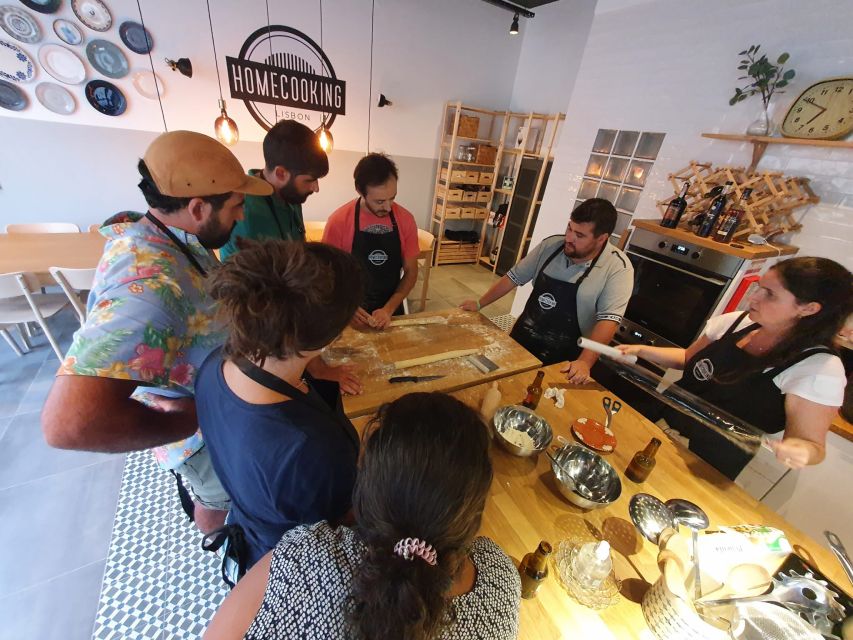
If you know anything about Portugal, you surely know about the delicious egg custard tart pastry called the pastel de nata. You may have already tried a few — perhaps even the legendary Pastel de Belém, a version only available at one bakery.
But your appreciation of this treat will go far deeper by baking some yourself!
With Homecooking Lisbon you can take a workshop that ends with enjoying your own fresh-out-of-the-oven pasteis de nata.
It’s a super fun experience and you can book it easily via GetYourGuide.
2. Dine at a secret Chinese restaurant
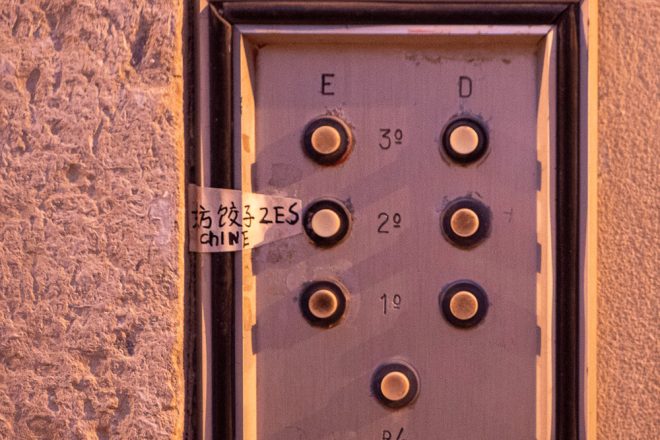
Did you come to Lisbon to eat Chinese food? Of course not.
But once you’ve sampled all the Portuguese cuisine, you may quite enjoy dining at a secret Chinese restaurant, which is an interesting part of immigrant culture in Lisbon.
Around Martim Moniz Square exist many speakeasy-style Chinese restaurants, operating inside apartment buildings and sometimes inside the owner’s homes.
The staff at a Chinês Clandestino probably won’t speak English or Portuguese, so you’ll have to point at pictures on the menu. You’ll get some affordable home-cooked Chinese food in a dining room-like setting.
If you type “illegal Chinese restaurant” into Google, you’ll easily find one, but this one isn’t so hidden or very good. Ask a local instead, or explore the streets and alleys around Martim Moniz Square (especially on the northeast side into Mouraria). Look for Chinese lanterns or find a doorbell with Chinese characters or a note saying ‘restaurant’. Press the buzzer and go inside!
3. Dolphin-watching in the Sado Estuary
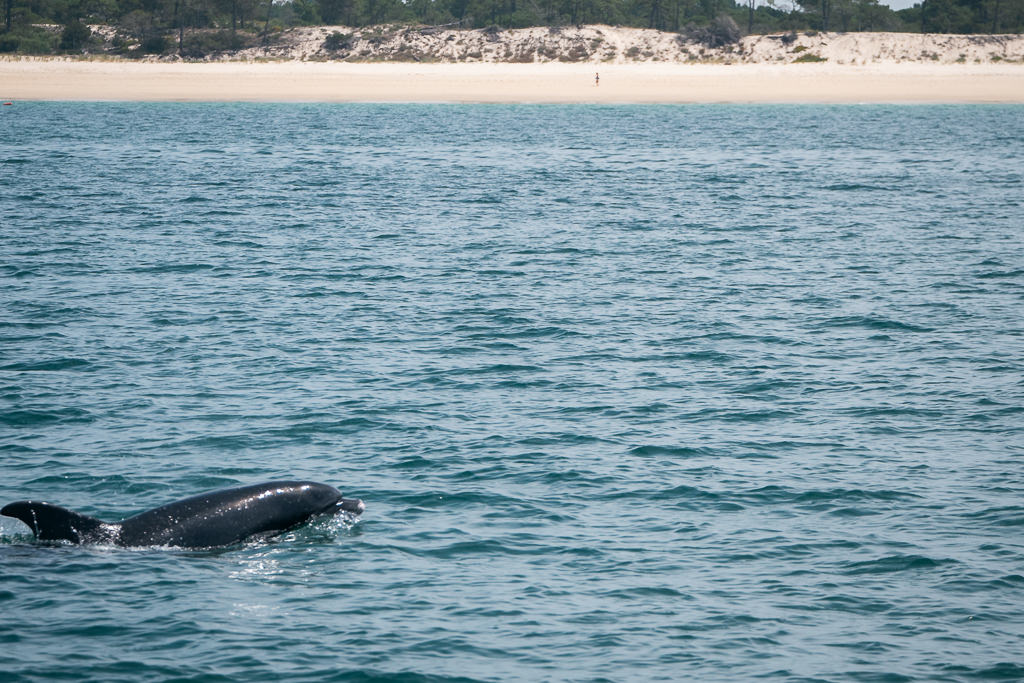
Who knew there were dolphins near Lisbon?
For the longest time, I certainly didn’t!
The Sado Estuary south of Lisbon is home to several shoals of playful bottlenose dolphins. Since this is their permanent territory, you are almost guaranteed to see them on a dolphin watching tour.
The boat departs from the town of Setubal, which is easily reached from Lisbon by bus or car. From the deck of the catamaran, you will get great views of the dolphins as well as the Arrábida nature reserve.
When I did this trip, we were lucky enough to see the dolphins display hunting behaviour, throwing fish into the air and then catching them. It was quite a magical experience.
4. Visit Queluz National Palace
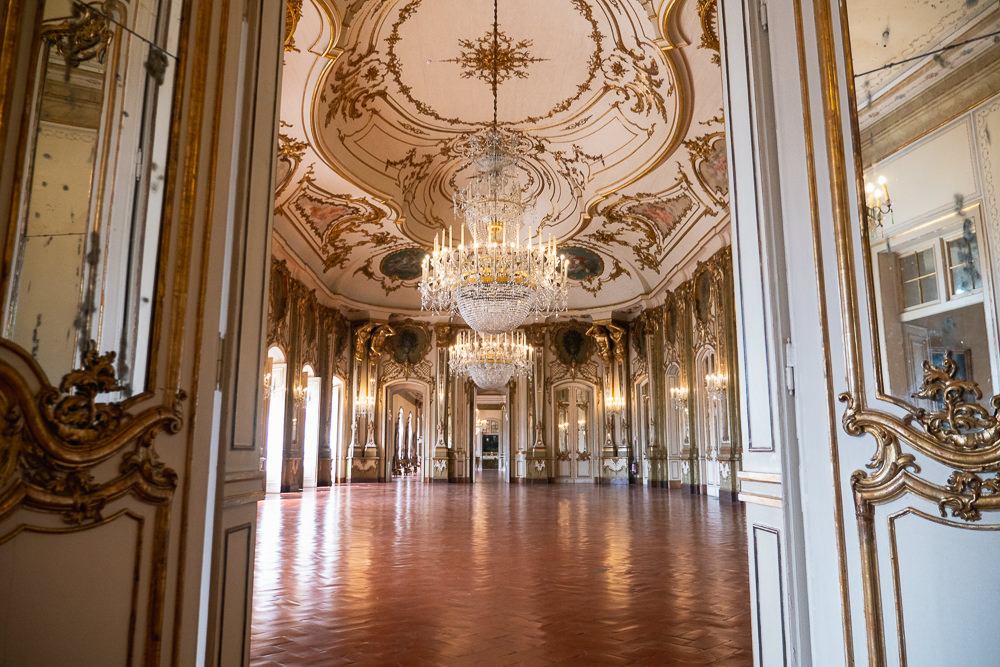
Portugal has absolutely no shortage of ornate palaces. They’re all over the country, but Queluz is one that’s just outside of central Lisbon.
This 18th-century palace was once the royal residence of Queen D. Maria I and her husband Dom Pedro III. It has a Versailles-esque design, featuring glimmering golden ballrooms and historical gardens. It takes an hour or two to visit and chances are you’ll see virtually no tourists there.
How to get there: Take the train from Rossio Station to Sintra and get out after 20 minutes at Queluz.
5. Discover the Tapada das Necessidades
map – Near the last stop of Tram 28
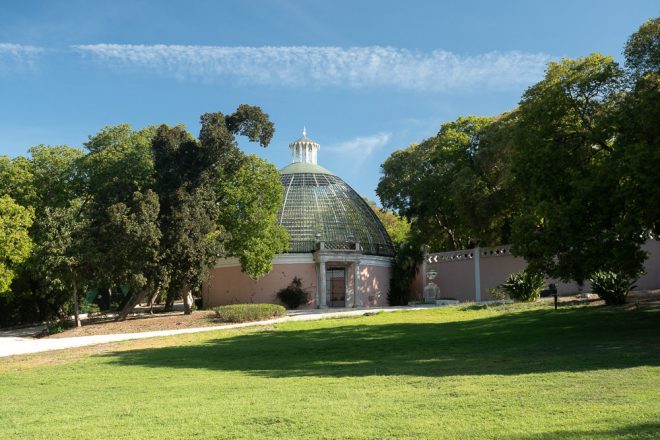
Truly a little gem hiding in plain sight, the park is where King Don Joao V went for picnics in the 17th century. Today, the place is a bit neglected, but it has one of the oldest cacti gardens in Europe, a beautiful old circular greenhouse, and phenomenal views of the Lisbon bridge.
Even though it’s centrally located between the Alcantara and Estrela neighborhoods, this gorgeous park has a bit of an abandoned feel. It’s great for a walk or to have a picnic with plenty of space.
6. Get on top of the Lisbon bridge
map – Pilar 7 Bridge Experience
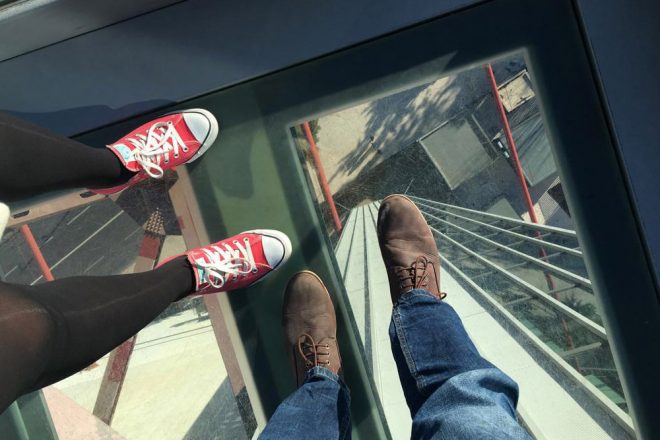
It probably hasn’t escaped you that Lisbon has a beautiful red suspension bridge that reminds one a little of the one in San Francisco. (Fun fact: it was constructed by the same company as the San Francisco Bay Bridge, but not the Golden Gate Bridge.)
It was originally named after the dictator Salazar, but it changed to become the 25th of April Bridge, commemorating the revolution of 1974.
The Pillar 7 Bridge Experience is accessed from the base of one of the pillars and gives you background on its construction. It also lets you go inside the impressive concrete structure housing the enormous cables. Finally, you can take an elevator up to the bridge itself where you can stand on a transparent platform and catch some epic views of the bridge and the river.
7. Learn about Lisbon’s street art
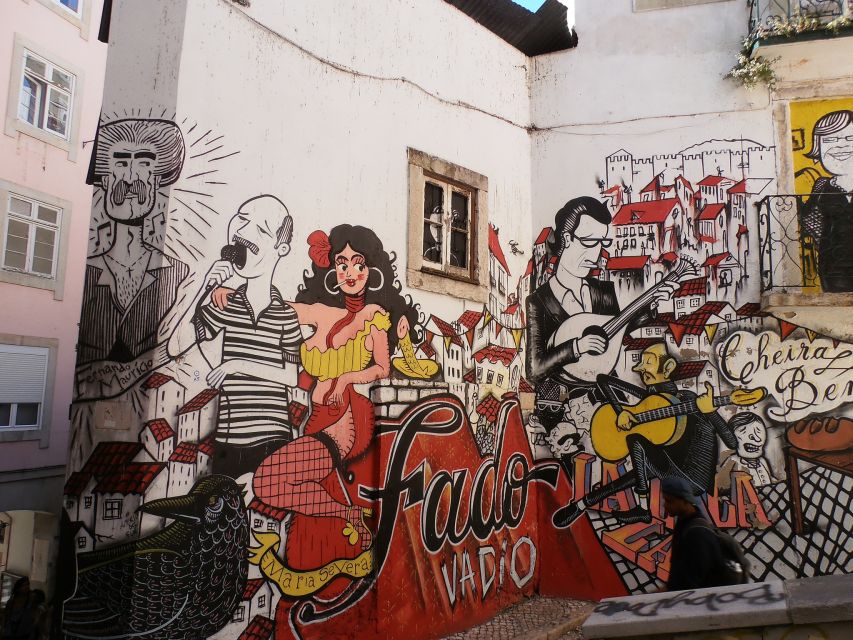
If you’ve spent any time in Lisbon at all you’ll know that it has some amazing street art! Since Lisbon has long had many abandoned buildings, it’s led to street art bringing some of their crumbling facades to life. Later, the local authorities took steps to allow this art form to flourish.
You can find all kinds of inspiring murals often in hidden places. One great way to discover them and to learn about the artists is with an expert guide. After going on a street art tour, you’ll be able to recognize specific artists, making your own exploration of the city all the more rewarding.
8. Take a day trip to Sesimbra
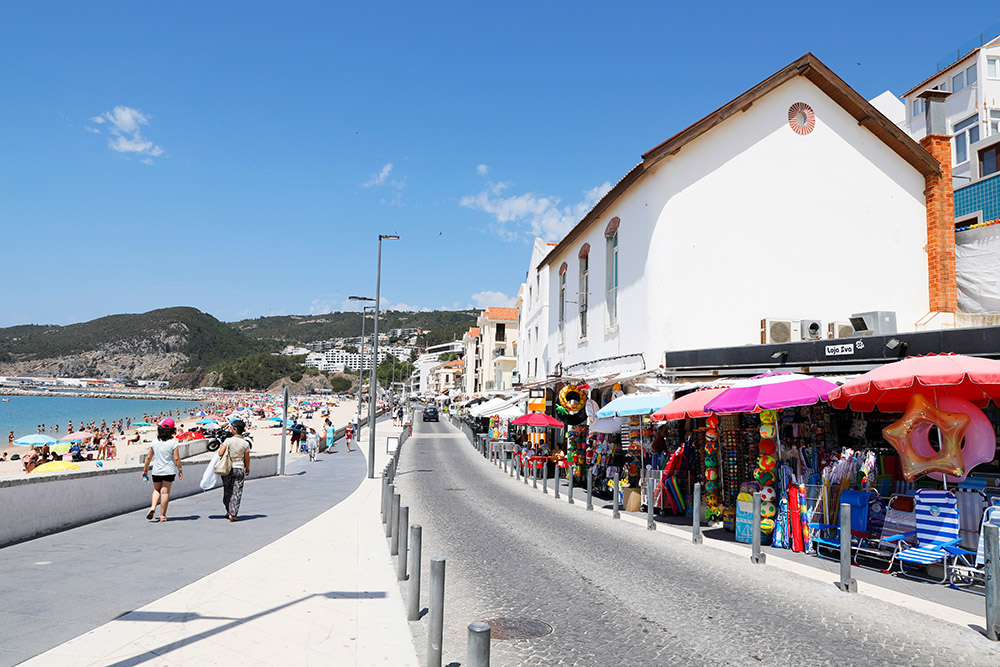
Sesimbra is a small beach town 30km south of Lisbon that’s popular mostly with the locals. Although it has a few big hotels on its fringes (they’re eyesores, if you ask me!), the old center of Sesimbra is super cozy and has lots of great marisqueiras (seafood restaurants). I think it’s one of the nicest day trips from Lisbon.
In summer, you can enjoy all sorts of water activities like kayaking, scuba diving, and stand-up paddle boarding. A ruined castle on top of one of the hills offers good views of the bay.
But the best bit of Sesimbra is its hidden cove called Praia do Ribeiro do Cavalo [location]. You’ll need either a car to reach it, or walk about 45 minutes from the center of town. This sheltered cove is gorgeous and may remind you of the craggy coves of the Algarve.
How to get there: take bus 3721 from Sete Rios train station in Lisbon. Alternatively, take the ferry from Cais do Sodre station across the river to Cacilhas, and take the 3536 bus to Sesimbra. You can view routes and timetables at the official Carris Metropolitana website. Alternatively, you can take a day trip to Sesimbra and Arrabida Park with an organized tour with pick-up in Lisbon.
9. Stroll the Estufa Fria greenhouse
map – near Parque Eduardo VII
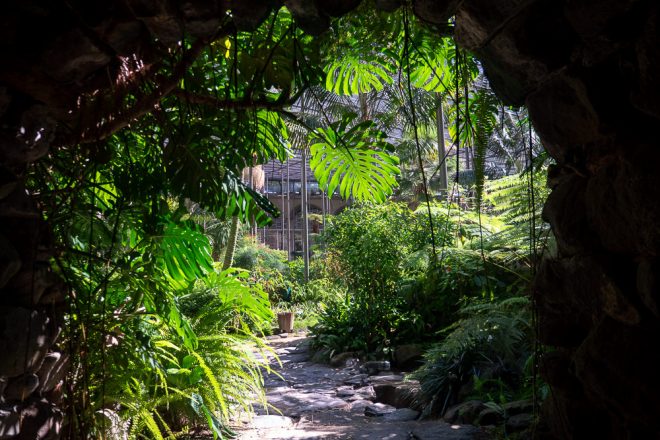
The Estufa Fria is a large semi-open botanical greenhouse that is worth a stroll on a lazy afternoon. It’s actually easy to miss, as it’s tucked underneath a hilltop in the Eduardo VII park, but it’s one of the nicest green spaces in the city.
You’ll feel like you’re walking in a little Garden of Eden with beautiful flowers and plants surrounding ponds, a waterfall, a cactus garden, tunnels, and other features. It’s open until 7 pm in summer, 5 pm in winter, and it costs €3 to enter.
10. Visit the Lisbon Earthquake Museum
map – in Belem, close to the MAAT museum
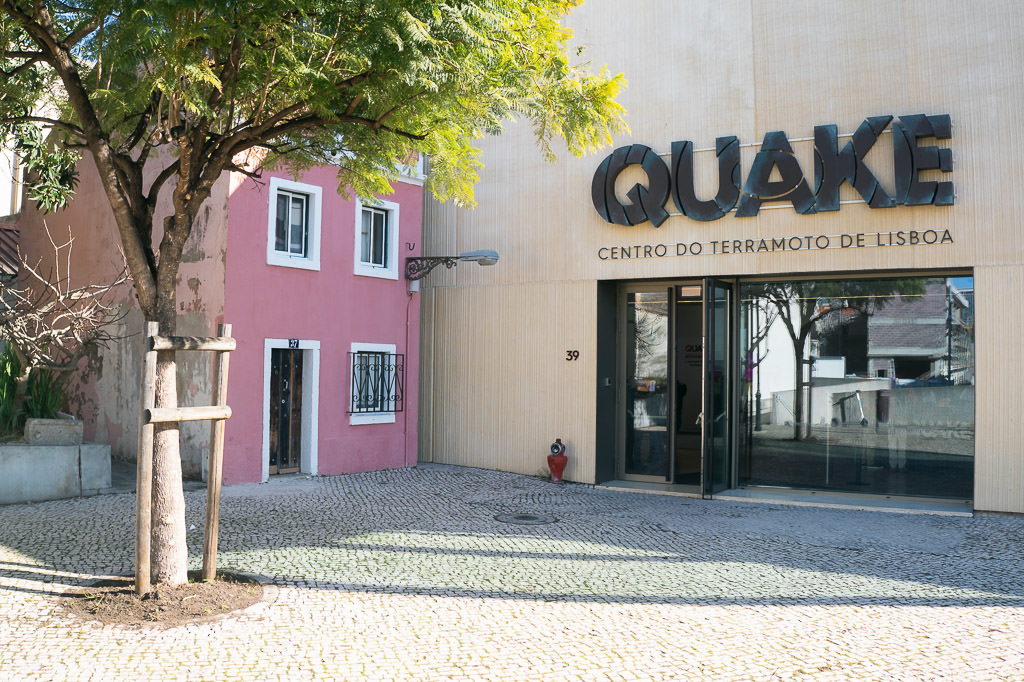
Not many guides mention this yet since it opened only recently!
In 1755, Lisbon experienced one of the biggest earthquakes and tsunamis ever, almost completely destroying the city and causing damage as far as Seville in Spain.
The interactive Lisbon Earthquake Museum transports you back in time to the streets of Lisbon before the quake. Through immersive experiences, you can learn more about the disaster and its many historical aftershocks.
The interactive tour takes about 1,5 hours. It’s a bit like an escape room but without the puzzles, or if a theme park designer made a museum. It’s highly educational and fun for kids (but adults too!).
11. Relax at Jardim do Torel
map – R. Júlio de Andrade
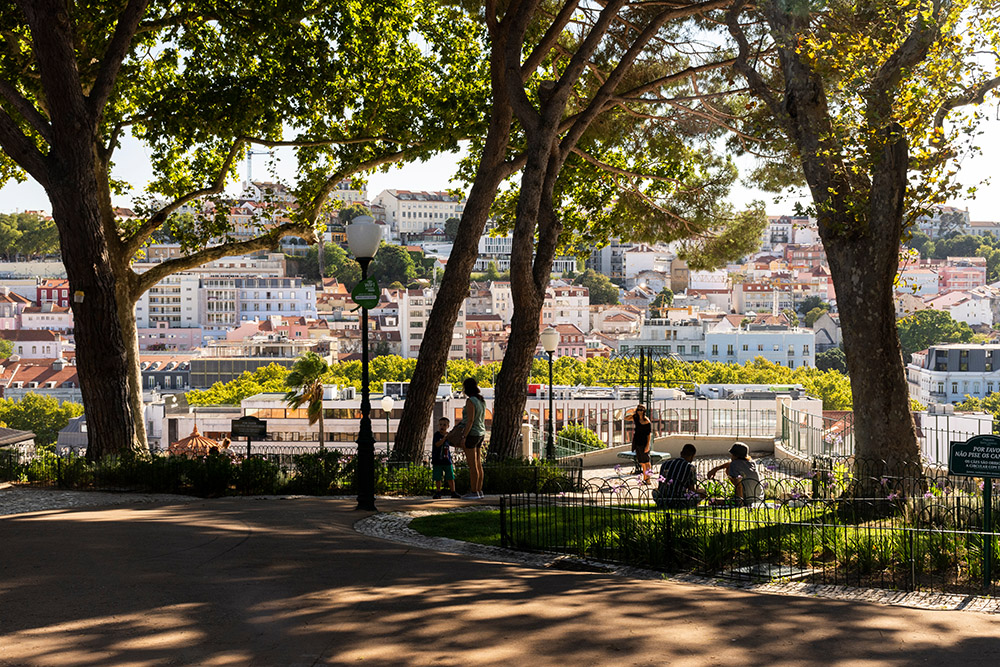
Of all the incredible miradouros (vistas) in Lisbon, a few will always remain off the tourist map. The Jardim do Torel is one such place: it feels a bit like a secret island that’s hidden in plain sight.
The views at Jardim do Torel don’t point towards some of Lisbon’s most prominent historical buildings, which is probably why it’s not tourist spot. But this beautiful miradouro is truly like an oasis, unknown even to many locals.
One cool way to reach the hill that it’s on is to take the Elevador do Lavra, the least-known of the three old funicular in Lisbon.
12. Catch a jam session at an associaçao
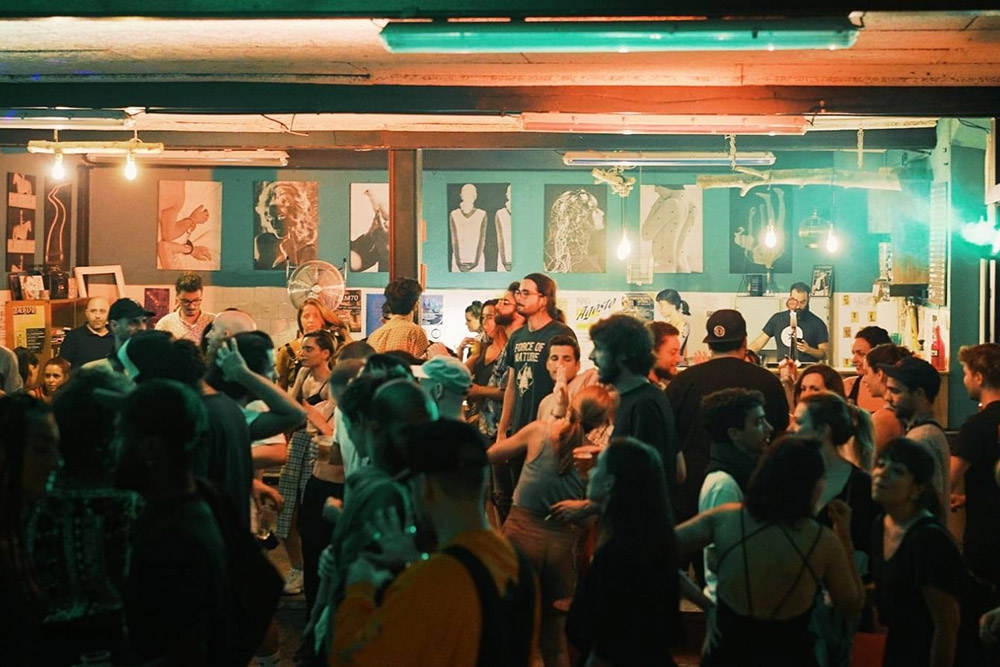
Lisbon is home to many associations, which are non-profit organizations that serve as cultural hubs throughout the city. If you’re local, these are some of the most fun places to go out at night, as they organize all sorts of jam sessions, open mics, and concerts throughout the week. Technically they’re ‘member clubs’ so you have to pay a small fee to enter.
Some of the coolest associations are in the area of Anjos, namely Anjos70, BUS – Paragem Cultural, and Crew Hassan, which can be found in the basement of a record store.
13. Stroll the Jardim Botânico d’Ajuda
map – Calçada da Ajuda
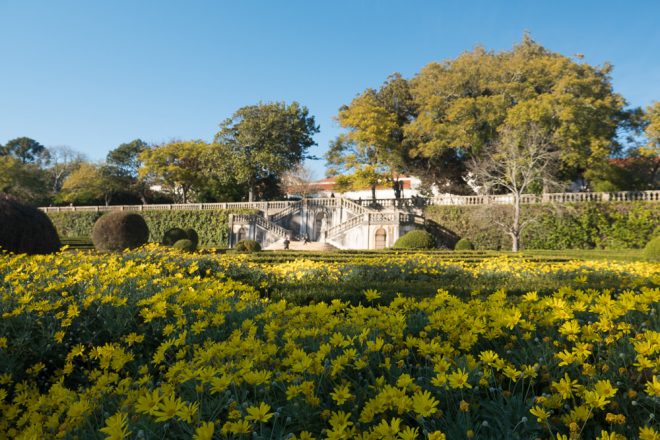
Lisbon is so spoiled for botanical gardens that a gorgeous one as this one can still manage to fly under the radar. It was built by Marques de Pombal in 1768, who filled it with trees and plant species from Portugal’s former colonies.
It’s the oldest garden in Lisbon and now managed by the agricultural university, but it’s publically accessible any day until about 5pm (entrance 2€). You can find these botanic gardens just up the hill from Lisbon’s museum quarter of Belem. Don’t confuse it with the Tropical Botanical Garden, which is closer to the riverfront (but also very nice!).
14. Visit the free Berardo modern art museum
map – Praça do Império, Belem

The Berardo Collection Museum is a phenomenal modern art museum, featuring works by iconic artists including Warhol, Picasso, Dali, Pollock, Mondriaan, and many more. It’s one of the best cultural sights in Lisbon, and the best of all entry is free.
The works belong to the Portuguese businessman José Berardo, who lent them to the state for public display. He’s been a source of some controversy, as he borrowed great sums using the art as collateral, which several banks have since been trying to seize due to unpaid debts. Regardless of who now owns the art, the museum is easily one of the best in Lisbon.
15. See the works of Bordalo Pinheiro
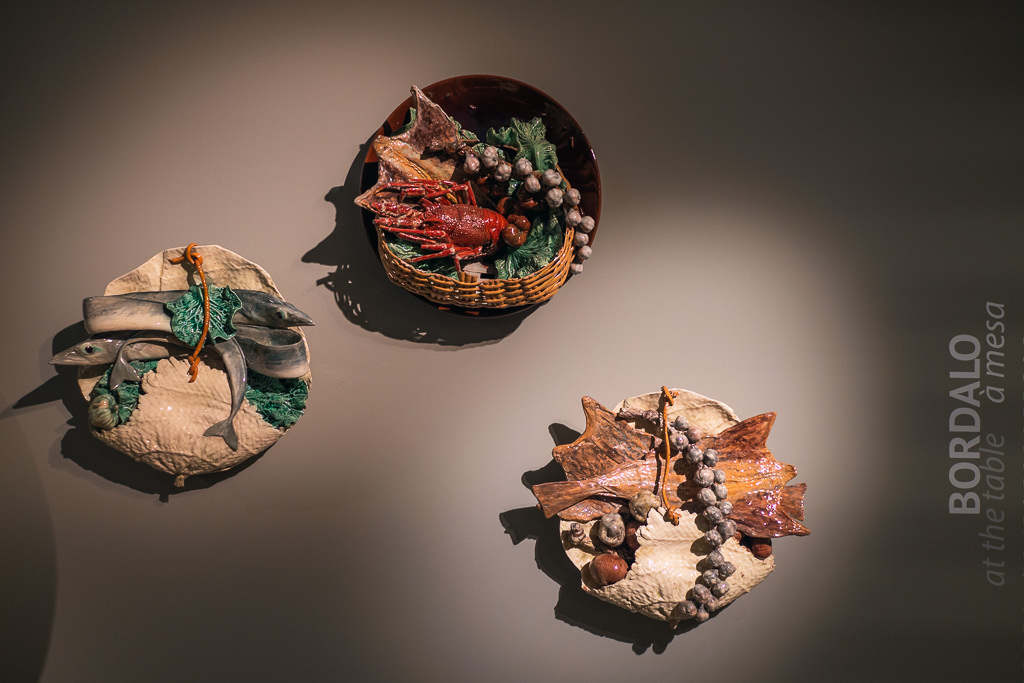
At markets and souvenir shops in Lisbon, you can often see bowls, plates, and other ceramics in the shape of vegetables or animals. (You can see examples here.)
These are based on the works of the 19th-century artist Raphael Bordalo Pinheiro, who created a wide range of ceramic art, illustrations, and watercolor paintings.
In the small and local Bordalo Pinheiro Museum you can see a great collection of his works. While his political cartoons probably won’t be very meaningful unless you are Portuguese, his ceramics and paintings can be more easily enjoyed.
It’s not a typical tourist attraction, but it’s fun to check out if you live in Lisbon and are looking for different things to do. On the way there, you can stop by the trendy local Alvalade neighborhood.
16. Take the mini-train to Lisbon’s best beaches
map – R. Parque Infantil 1, Costa da Caparica
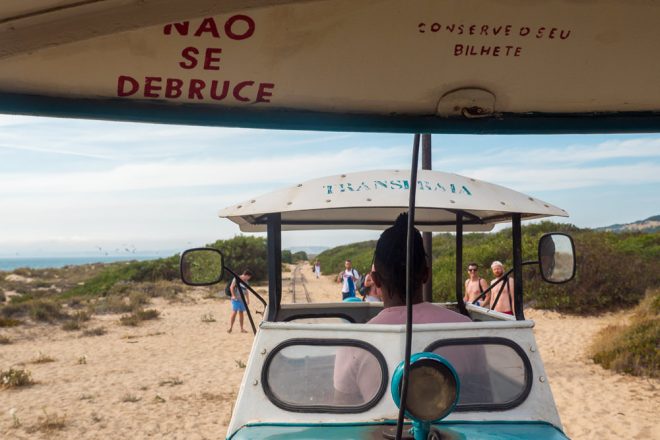
I lived in Lisbon for three years before I finally learned of the mini-train — and now it’s my favorite thing!
The Transpraia train runs in the summer months, connecting Costa da Caparica to a dozen or so beaches. The rickety old tourist train ends at Fonte da Telha, which is possibly the most beautiful beach near Lisbon. Normally you need a car to get there, but not when the mini-train is running.
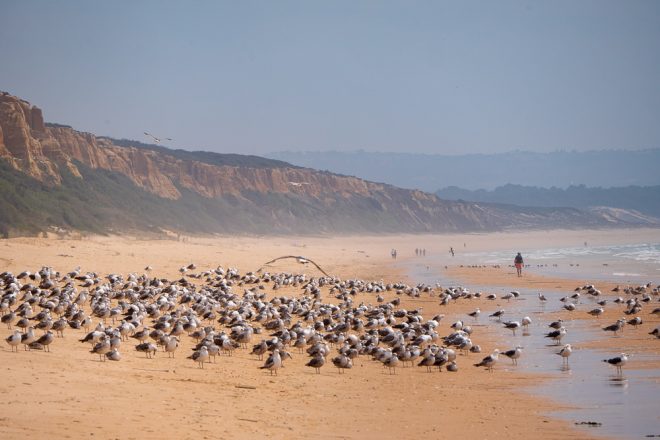
To be honest, it’s easier and more convenient to Carcavelos beach, which is just 20 minutes by train from the central Cais do Sodré station. But once you’ve been to Carcavelos a few times, you may be ready for Fonte da Telha.
How to get there: First, take the bus to Costa de Caparica. Then, walk to the mini-train departure point (here on the map). It goes every half hour from June 1 until September 30.
Choo choo!
17. Explore the Natural History Museum
map – R. da Escola Politécnica 56
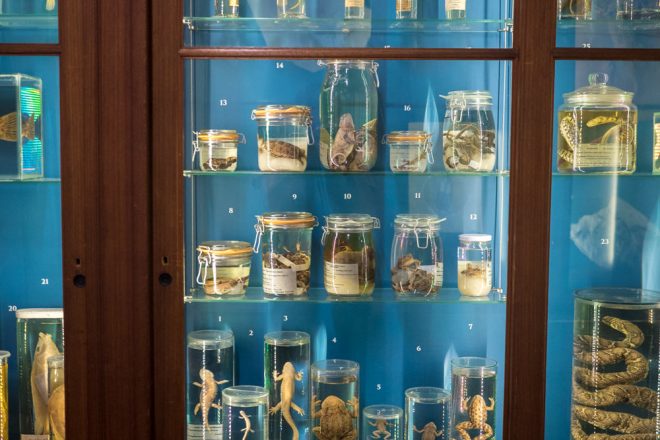
The Natural History Museum has several nice exhibitions that can keep you busy for at least a couple of hours. It’s a great museum check out on a rainy day, though it should be mentioned most exhibits are in Portuguese only.
Half the fun is just seeing the historical building with its old science lab, lecture hall, and numerous cabinets stuffed with samples, taxidermy, fossils, and more.
Don’t miss the beautiful botanical gardens next door either (you can get a combined ticket for both).
18. Shop at the Lojas com historia
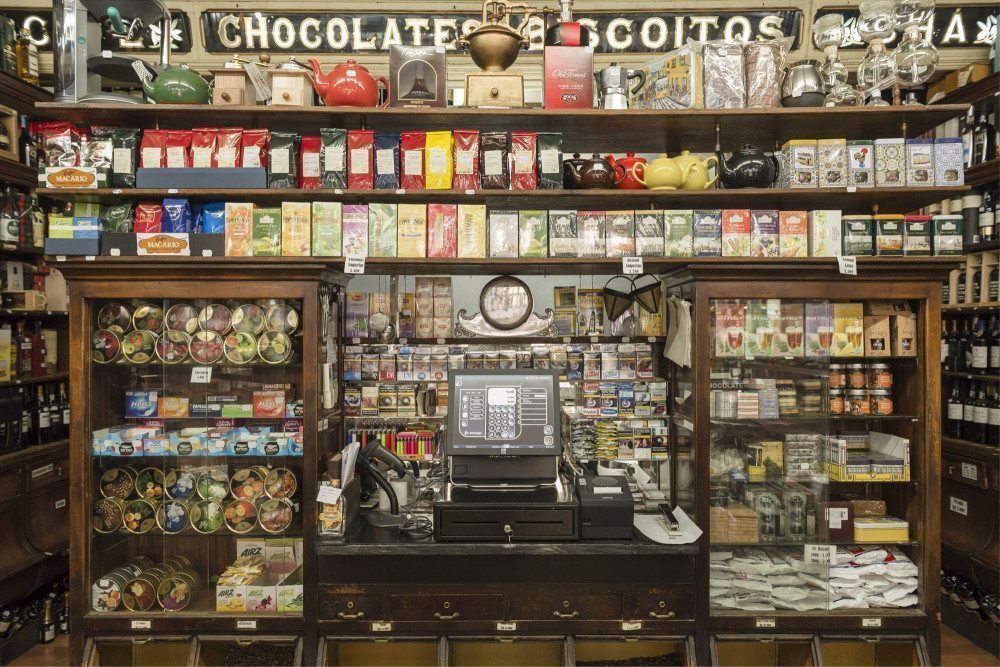
When walking around central Lisbon (especially the Baixa area) you may have noticed many traditional stores selling only one particular product, such as classic hats, buttons, gloves, or chocolates. You may also wonder just how these stores manage to survive in an age of H&Ms and Zaras.
In fact, these are historical shops that enjoy protected status, many of them featuring beautiful wooden interiors. Some have been around for over a hundred years, proudly remaining within families for generations. The website of Lojas Com Historia lists them all.
19. Take the cable car in Parque das Nações
map – on Esplanada Dom Carlos I
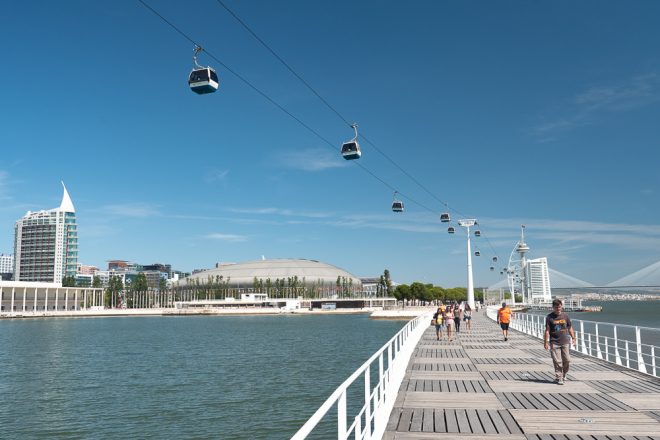
The Parque das Nações (Nations’ Park) area of Lisbon is relatively modern, so it’s not always the first area that visitors to Lisbon seek out. It’s nevertheless an interesting area, having once hosted all the pavilions of the Expo ‘98. It’s filled with boulevards, striking architecture, and is home to the impressive Oceanarium.
Another leftover from the Expo ’98 is the 18 meter high cable car (Telecabine), which gives great views of the Tagus river and the Vasca de Gama Bridge, currently the longest in Europe. You can get tickets here.
20. Take the Boca do Vento elevator
map – R. do Ginjal 72, Almada
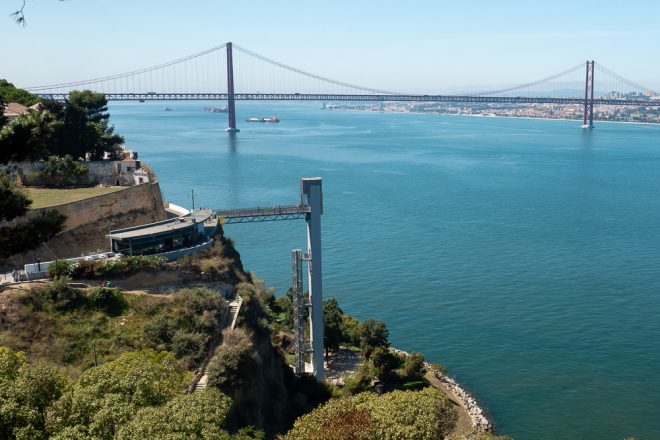
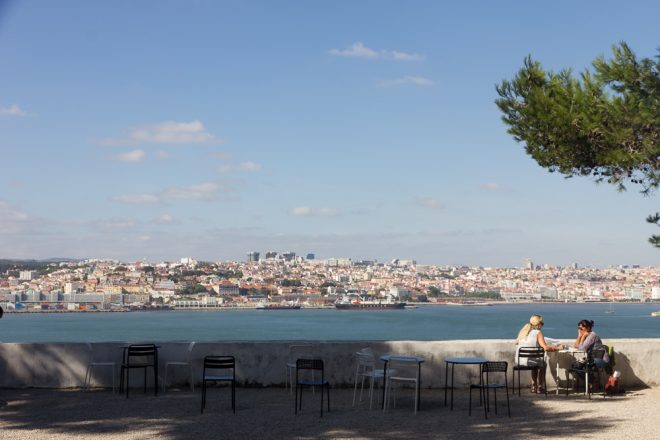
The historic center of Lisbon is best viewed from the other side of the river. Take the ferry from Cais do Sodré station to Cacilhas, which takes just five minutes. There are nice restaurants and cafes facing the riving for great views of the city and the bridge.
If you walk a bit further west, you can take the Elevador Panoramico da Boca do Vento to get high up on the cliffs. Next to the elevator is the Casa da Cerca [map], a mansion turned into a contemporary art center. It also a small but nice botanical gardens and a lovely place to have a coffee with a view. Entry to Casa da Cerca is free.
The Boca do Vento is one of the stops on this 3-hour electric bicycle tour of the south bay of Lisbon.
21. Peek inside Casa do Alentejo
map – Rua das Portas de Santo Antão 58
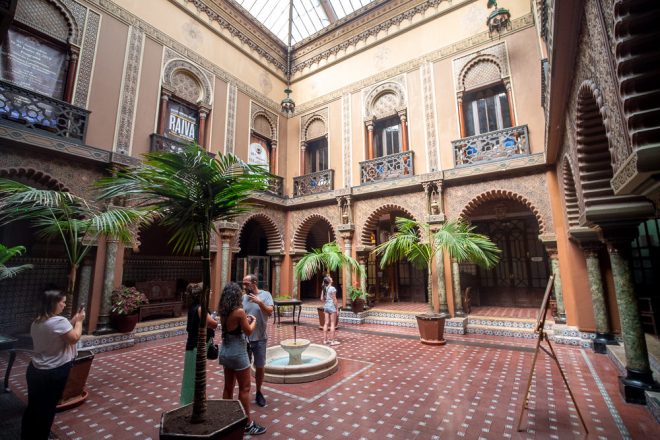
Back in the day, Lisbon had different meeting houses for people from all the provinces of Portugal — a bit like cultural embassies for the regions. The Casa do Alentejo served this purpose for the Alentejo region and is worth seeing for its wonderful building. Its courtyard is publically accessible and feels like a Moorish mansion, but don’t miss the restaurant on the second floor with its amazing ballroom with intricate tile paintings.
22. Eat at the Campo de Ourique Market
map – R. Coelho da Rocha 104
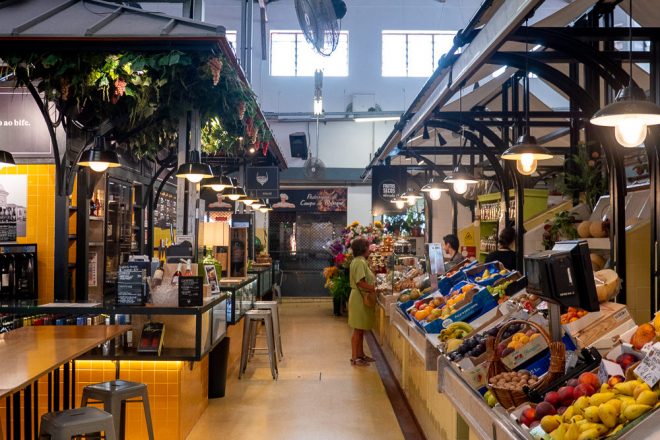
The TimeOut Market may be Lisbon’s most famous, but I prefer this smaller market, which is in a residential neighborhood. Part of the market still sells fish and fruit, while the other part has many gourmet food stalls with bar stools where you can sample some great Portuguese and international dishes.
This market is one of the stops on this local neighborhoods of Lisbon tour.
23. Check out Lisbon’s other aquarium
map – Vasco de Gama Aquarium, Alges
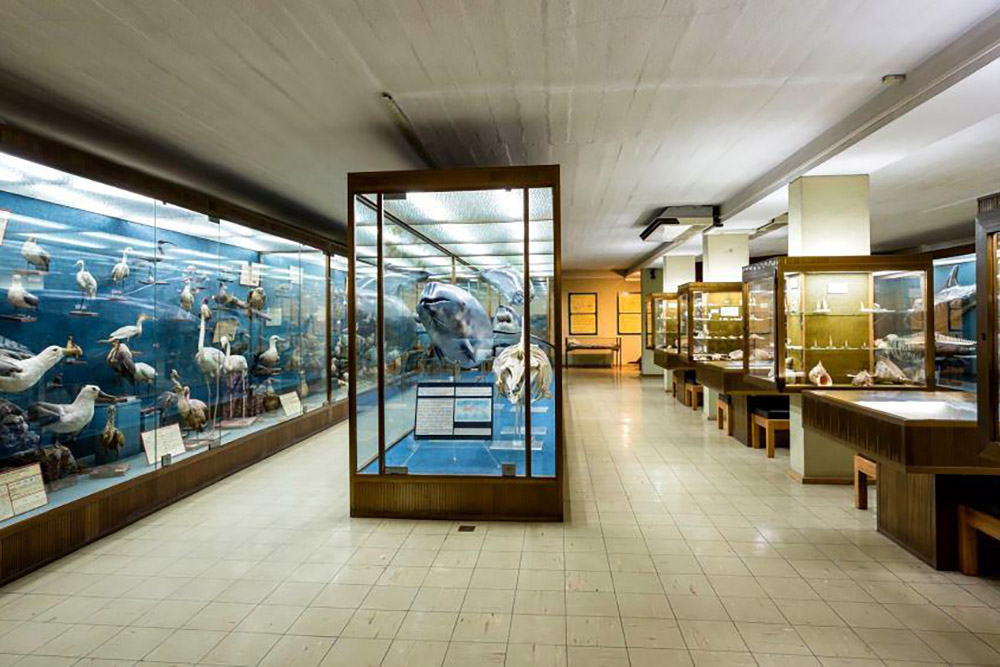
The Lisbon Oceanarium is one of the world’s biggest and you can find it in Parque das Nações, which was once the exhibition grounds for the Expo ’98. But there is another much smaller aquarium in Alges. The Vasco de Gama Aquarium feels more like a private collection, with many amphibians and fishes on display in a charming old building.
It may exist merely in the shadows of the epic Oceanarium, but nevertheless, it’s surprisingly good fun. It’s perfect to go with young kids or if you’re simply a curious local.
The aquarium gives you an excuse to check out Algés, a neighborhood that’s technically just outside of Lisbon. Afterward, you can eat at the Mercado de Algés, which is like a mini version of the TimeOut Food Market in central Lisbon.
24. Be fancy at Palácio Chiado
map – R. do Alecrim 70
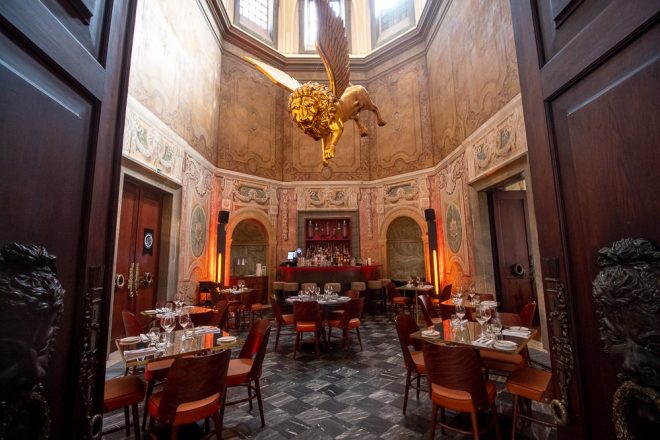
The Palácio Chiado might just be the most opulent place in Lisbon. Its palatial rooms and giant 18th-century murals are already impressive, though the interior decorators took things up another notch — for instance, by hanging a big golden lion with wings from the ceiling.
Despite its extravagant appearance, you don’t need to be wealthy to enjoy the Palácio. The gourmet food court and champagne bar are reasonably priced, making this a fun and fantastically over-the-top place to enjoy some good drinks and dinner.
Some links may be affiliate links, meaning I may earn commission from products or services I recommend. For more, see site policies.
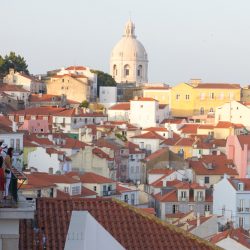





Crew Hassan has unfortunately been forced to close doown due to rent increase.
I saw it on their Instagram… it’s such a pity. Thanks for mentioning and I’ll update the post when I have a chance.
Cheers for this list, I’ve been to Lisbon many times and there are a pile of things on here that I never knew about!
Glad you find it useful! If you discover any other cool places, let me know 😉